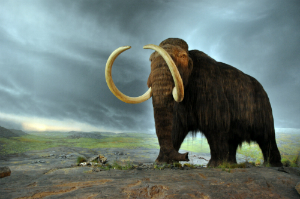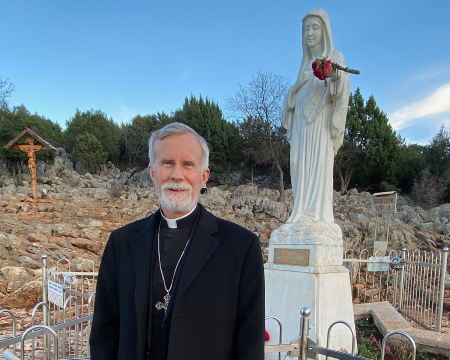We ask you, humbly: don't scroll away.
Hi readers, it seems you use Catholic Online a lot; that's great! It's a little awkward to ask, but we need your help. If you have already donated, we sincerely thank you. We're not salespeople, but we depend on donations averaging $14.76 and fewer than 1% of readers give. If you donate just $5.00, the price of your coffee, Catholic Online School could keep thriving. Thank you.Help Now >
How can an extinct population of woolly mammoths help save endangered species today?
FREE Catholic Classes
As the last woolly mammoths made their last stand on a Siberian island, the pyramids were under construction in Egypt. What caused these magnificent beasts to go extinct and what practical things can they tell us today?
 Hi readers, it seems you use Catholic Online a lot; that's great! It's a little awkward to ask, but we need your help. If you have already donated, we sincerely thank you. We're not salespeople, but we depend on donations averaging $14.76 and fewer than 1% of readers give. If you donate just $5.00, the price of your coffee, Catholic Online School could keep thriving. Thank you. Help Now >
Hi readers, it seems you use Catholic Online a lot; that's great! It's a little awkward to ask, but we need your help. If you have already donated, we sincerely thank you. We're not salespeople, but we depend on donations averaging $14.76 and fewer than 1% of readers give. If you donate just $5.00, the price of your coffee, Catholic Online School could keep thriving. Thank you. Help Now >

The mammoth went extinct around the same time the pyramids were under construction in Egypt.
Highlights
CALIFORNIA NETWORK (https://www.youtube.com/c/californianetwork)
3/6/2017 (7 years ago)
Published in Green
Keywords: woolly mammoth, genetics, diversity, extinction
LOS ANGELES, CA (California Network) --- The last woolly mammoth died about 4,000 years ago as humans were busy populating the Earth. There are several factors that contributed to the demise of the woolly mammoth. Climate change, hunting by humans, and now genetic diversity seems to be a significant factor.
It is hypothesized that has the mammoths died and their populations became isolated, each group reached a genetic point of no return, long before they went extinct. The discovery suggests that many other species on Earth, which scientists are struggling to save, are already doomed.
The study focuses on the genetics of the very last herd of mammoths on Wrangel Island. The island is in the Arctic, a hundred north of the Siberian landmass, and 300 miles northwest of the Alaskan coast.
The herd lasted for several thousand years, but they were isolated. Inbreeding within the herd reduced genetic diversity. Less desirable traits became more common, such as softer fur and a poor sense of smell. These genetic changes made survival more difficult.
Normally, such traits would be bred out of the population as better suited mammoths prevailed, but without the ability to breed with genetically stronger specimens, the small population became riddled with undesirable mutations.
Calculations suggest 4,300 years ago the breeding mammoth population was down to just 300, and dwindling fast.
There is no certainty that this hypothesis is true, but it seems plausible. And it also has implications for modern conservation efforts. It may be that there is a point of no return below which genetic diversity dooms a species to extinction regardless of conservation efforts. Scientists already pay attention to genetic diversity when choosing animals for conservation. This places greater emphasis on that practice.
The finding also suggests that many species of animals are already doomed in spite of our efforts to protect them. Even if all human threats vanished, several species would die out anyway because they lack the genetic diversity they need to remain resilient as a species.
If scientists hone their conservation approach with this knowledge in mind, they can avert future crises. While it may be too late for some, it is just in time for others.
--- The California Network is the Next Wave in delivery of information and entertainment on pop culture, social trends, lifestyle, entertainment, news, politics and economics.
We are hyper-focused on one audience, YOU, the connected generation.
JOIN US AS WE REDEFINE AND REVOLUTIONIZE THE EVER-CHANGING MEDIA LANDSCAPE.
We ask you, humbly: don't scroll away.
Hi readers, it seems you use Catholic Online a lot; that's great! It's a little awkward to ask, but we need your help. If you have already donated, we sincerely thank you. We're not salespeople, but we depend on donations averaging $14.76 and fewer than 1% of readers give. If you donate just $5.00, the price of your coffee, Catholic Online School could keep thriving. Thank you.Help Now >






 Daily Readings for Saturday, April 20, 2024
Daily Readings for Saturday, April 20, 2024 St. Marian: Saint of the Day for Saturday, April 20, 2024
St. Marian: Saint of the Day for Saturday, April 20, 2024 Children's Prayer For Parents: Prayer of the Day for Saturday, April 20, 2024
Children's Prayer For Parents: Prayer of the Day for Saturday, April 20, 2024


